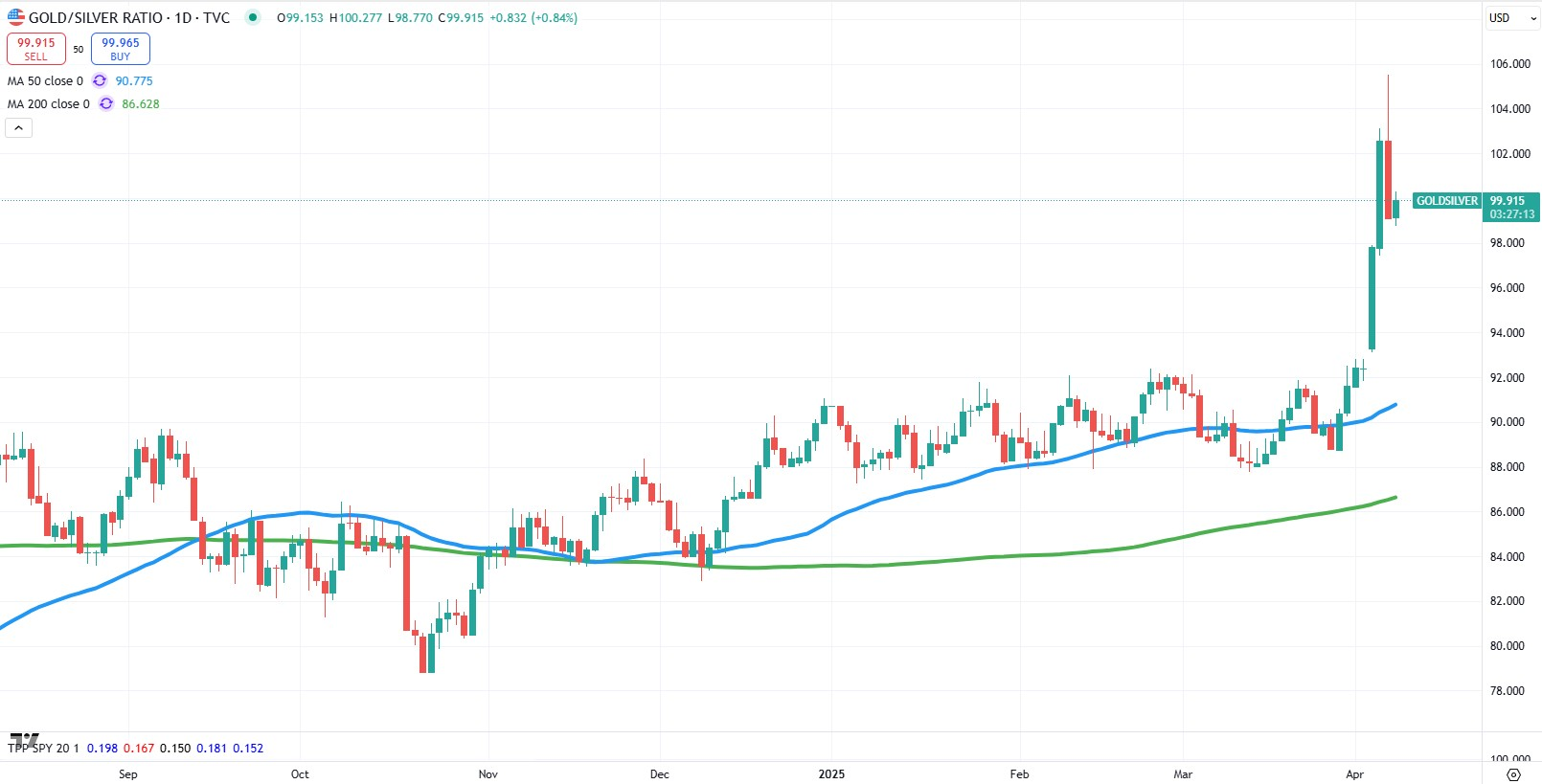For today, here is the reprint of an interview I did on Monday, April 7th, with Neils Christensen from Kitco.com.
No hurry to buy silver or gold as economic uncertainty remains elevated
Quoting Kitco News:
The silver market is starting to see some signs of stabilization with prices pushing back above $30 an ounce; however, one market analyst says that it is still too soon to jump into the market as the economy balances on a precarious edge.
Silver took a significant hit in the last few sessions as President Donald Trump’s broad global import tariffs roiled financial markets and sparked fears of trade-war-induced recession. Silver was hit particularly hard as 50% of demand comes from industrial consumption.
Last week, silver prices dropped more than 13% following Trump’s announcement. The precious metal saw further selling on Monday, briefly dropping to 28.315 an ounce, its lowest level since early September.
Silver has since been clawing its way higher with prices currently trading at $29.99 an ounce, down 0.3% on the day. In an interview with Kitco News, Michele Schneider, Chief Market Strategist at MarketGauge, said that while silver’s bounce may seem attractive, now is not the time to chase the market. 
The best thing investors and traders should do in this environment is nothing, as it is too early to define any major trend in the economy or global marketplace.
“A lot of damage has been done and I just don’t know if or when we will see more damage,” I said in the interview.
Due to the economic chaos, global markets are undergoing many conflicting moves. I noted that bond yields have actually started to pick up, which is the opposite of what traders would expect as equities struggle due to elevated recession fears.
Although high-yield bonds saw their worst slump since 2020, the spread between junk bonds and high-quality credit remained above critical support levels.
While sentiment has calmed slightly, what makes today’s uncertain environment so unique is that there is not just one factor driving fear sentiment. I noted that the 2008 Great Financial Crisis was caused by liquidity issues in the housing sector, while the global COVID-19 pandemic caused the downturn in 2020.
While Trump’s import tariffs have sparked a global trade war, conditions were already starting to deteriorate. The world has seen a significant elevation in geopolitical uncertainty due to Russia’s invasion of Ukraine and the ensuing Western economic sanctions and Israel’s war against Hamas. At the same time, unsustainable global debt levels, led by U.S. deficit spending, have kept inflation at elevated levels, and for the last three years, central banks have been diversifying away from the US dollar and into gold.
“There isn’t just one issue driving this uncertainty, which tells me that I don’t think we have seen the end of this turmoil,” I said.
Silver’s drop to a multi-month low Monday was an interesting move, but said that I would need a move back above $31 an ounce.
I am now neutral gold and silver, exiting her positions last week.
While I remain bullish on both gold and silver, I said that I need to see further stabilization in the marketplace before I rebuild her position. I noted that silver’s underperformance against gold has pushed the gold:silver ratio to a five-year high above 106 points.
“I would need to see the gold:silver ratio go below 94 points before I would get back into silver,” I said. “In this environment, there is no hurry to get into a position.”
ETF Summary
(Pivotal means short-term bullish above that level and bearish below)
- S&P 500 (SPY) 480 support
- Russell 2000 (IWM) 180 pivotal
- Dow (DIA) 35,000 I remember it well
- Nasdaq (QQQ) 380 has to hold
- Regional banks (KRE) 45-46 last year support level
- Semiconductors (SMH) 165 is huge to hold
- Transportation (IYT) Breaking down unless it gets back over 57
- Biotechnology (IBB) 115 resistance
- Retail (XRT) Closes April down here, spells recession
